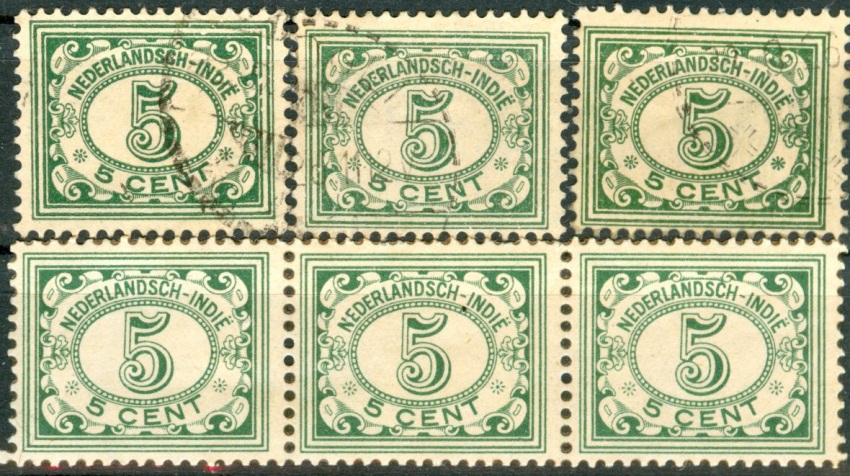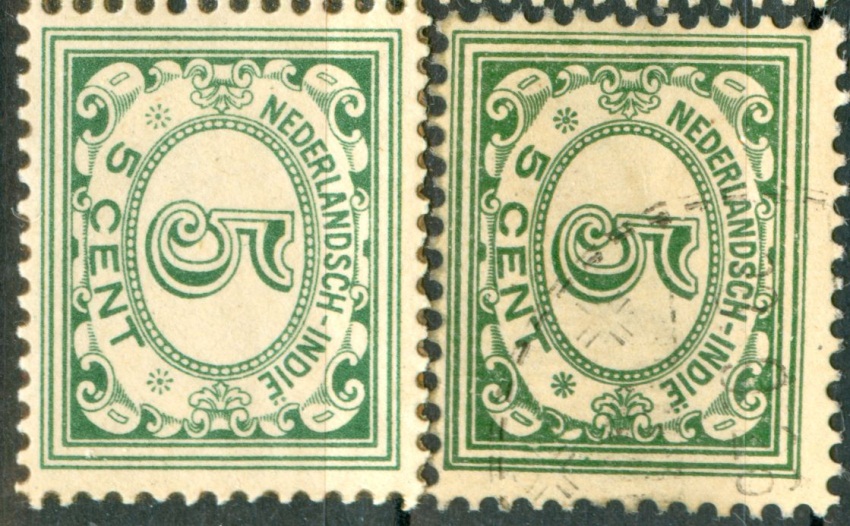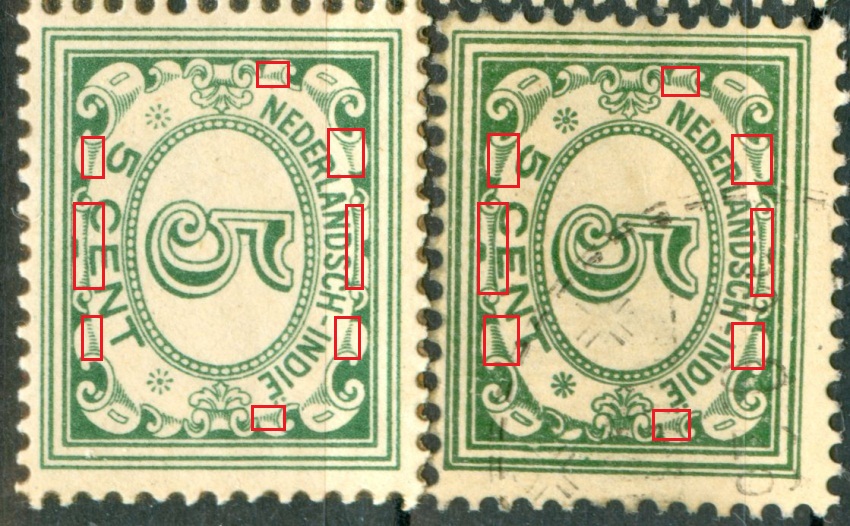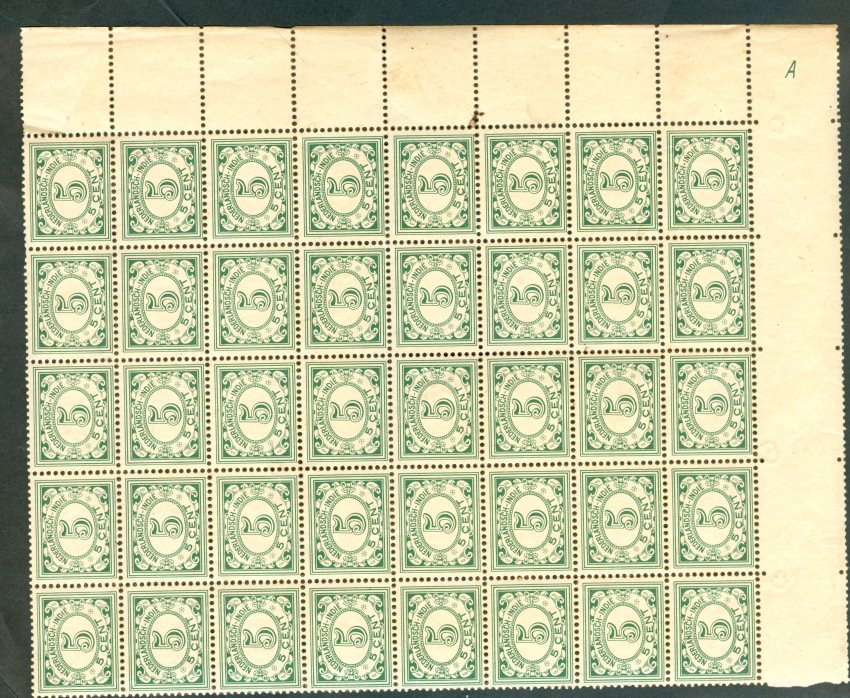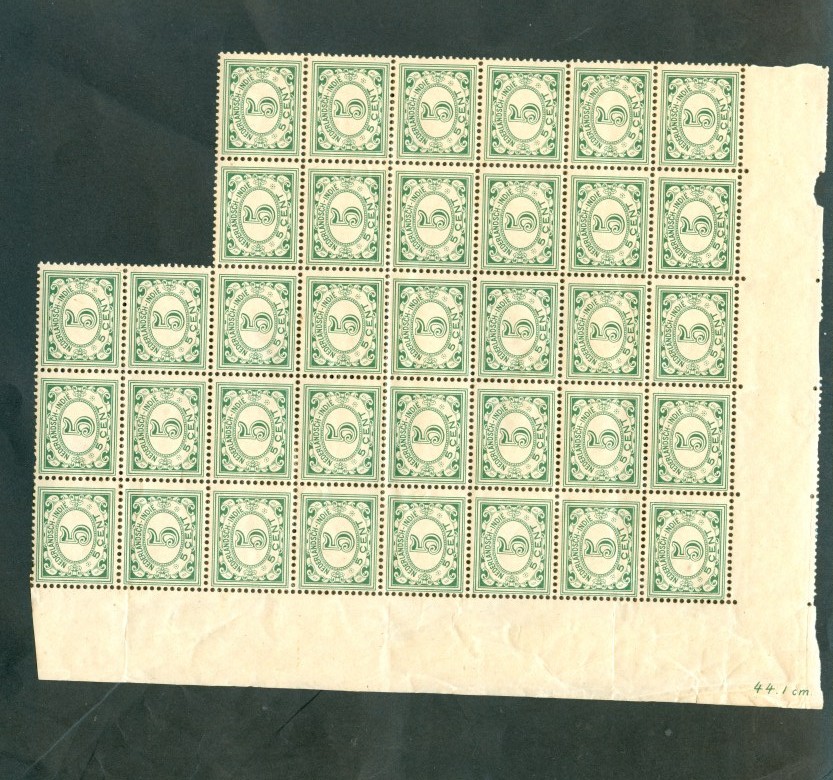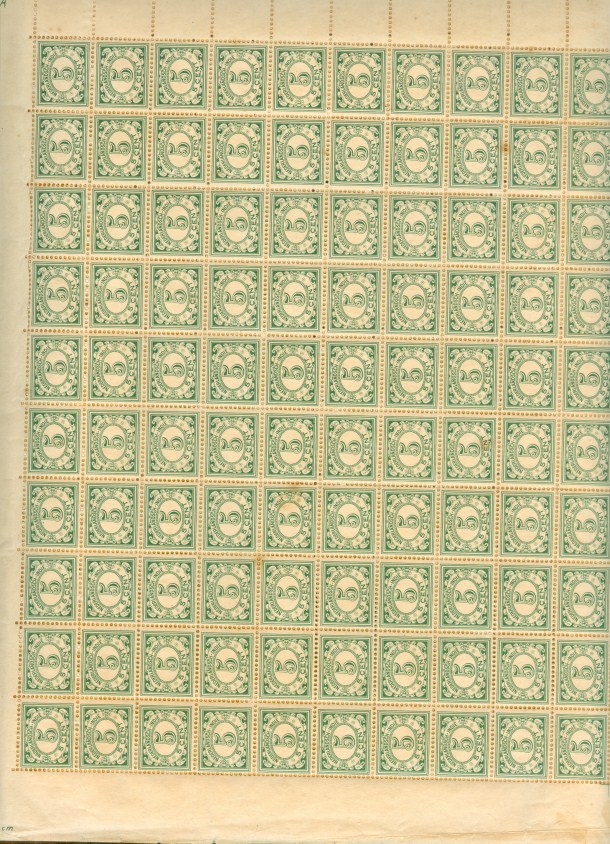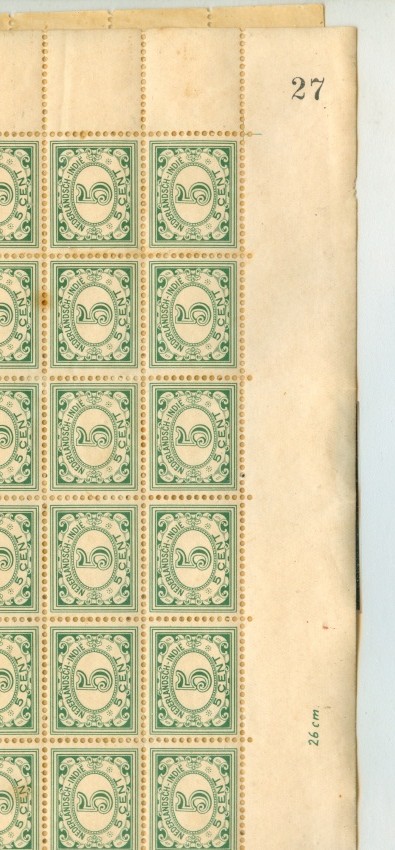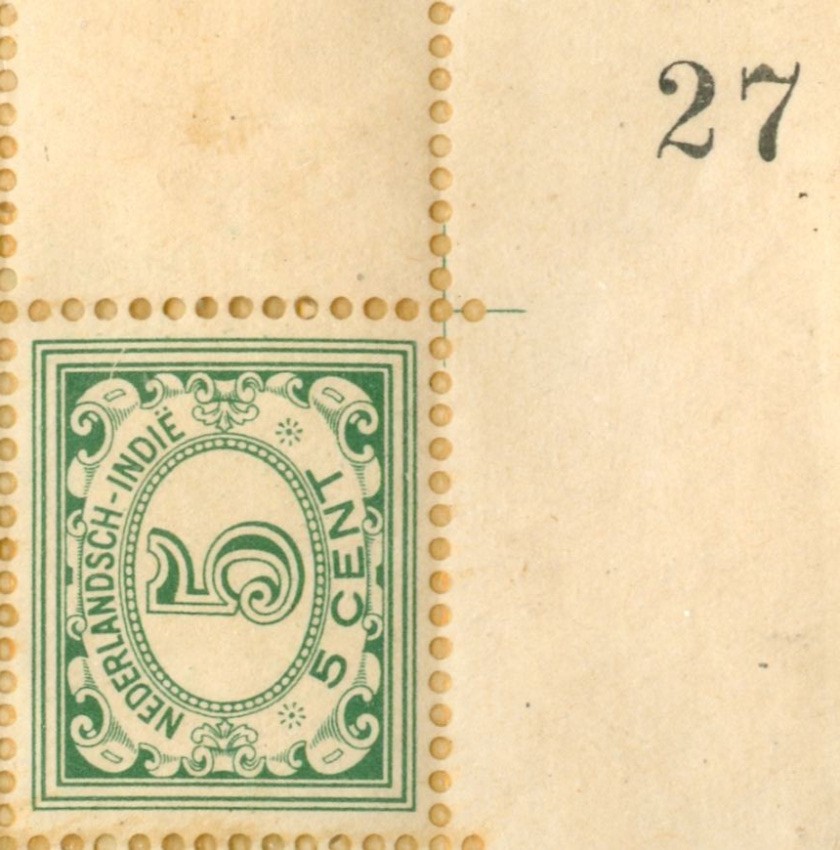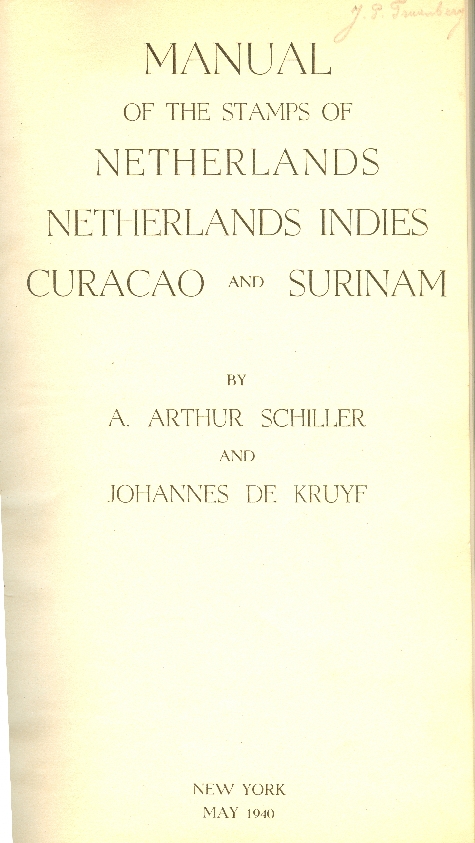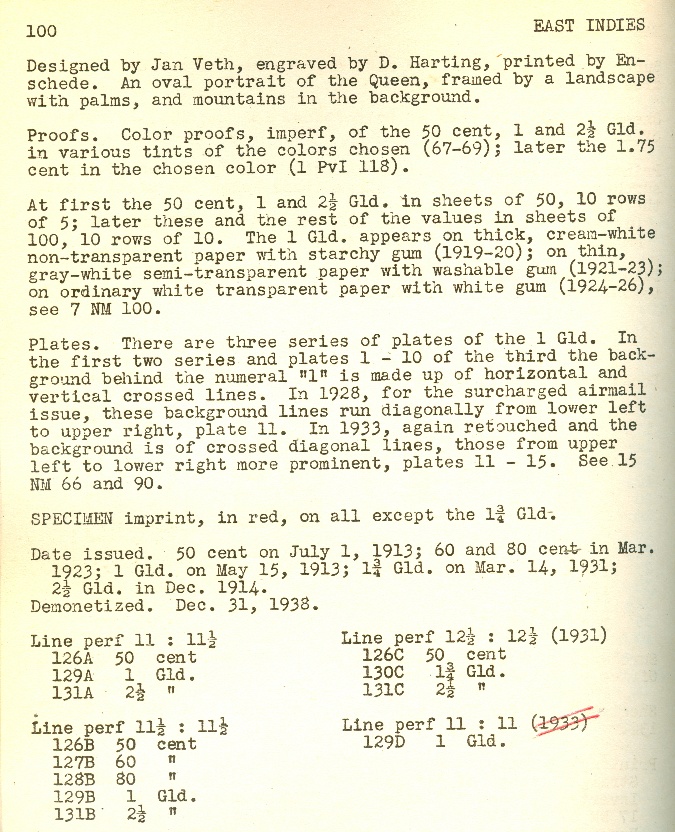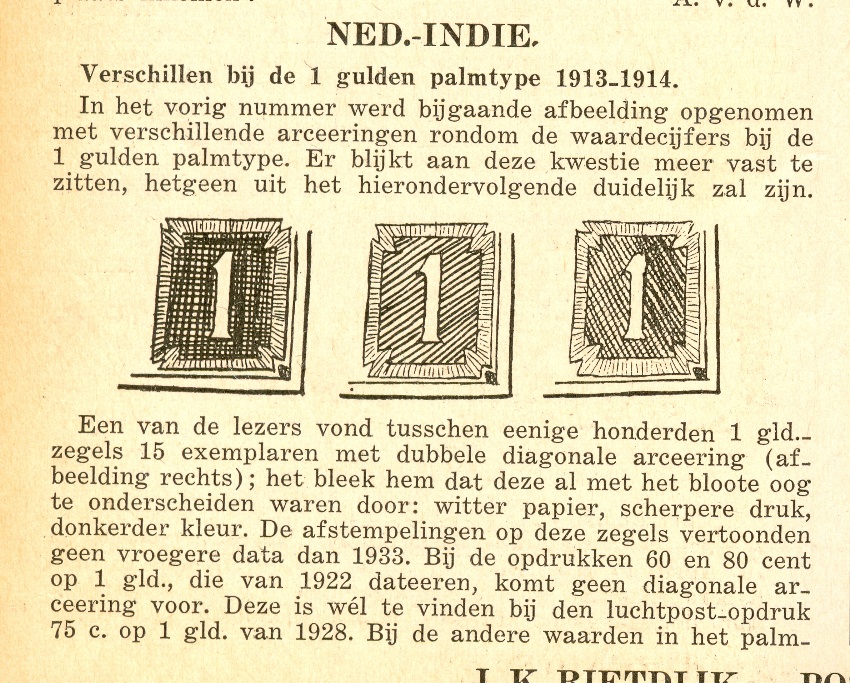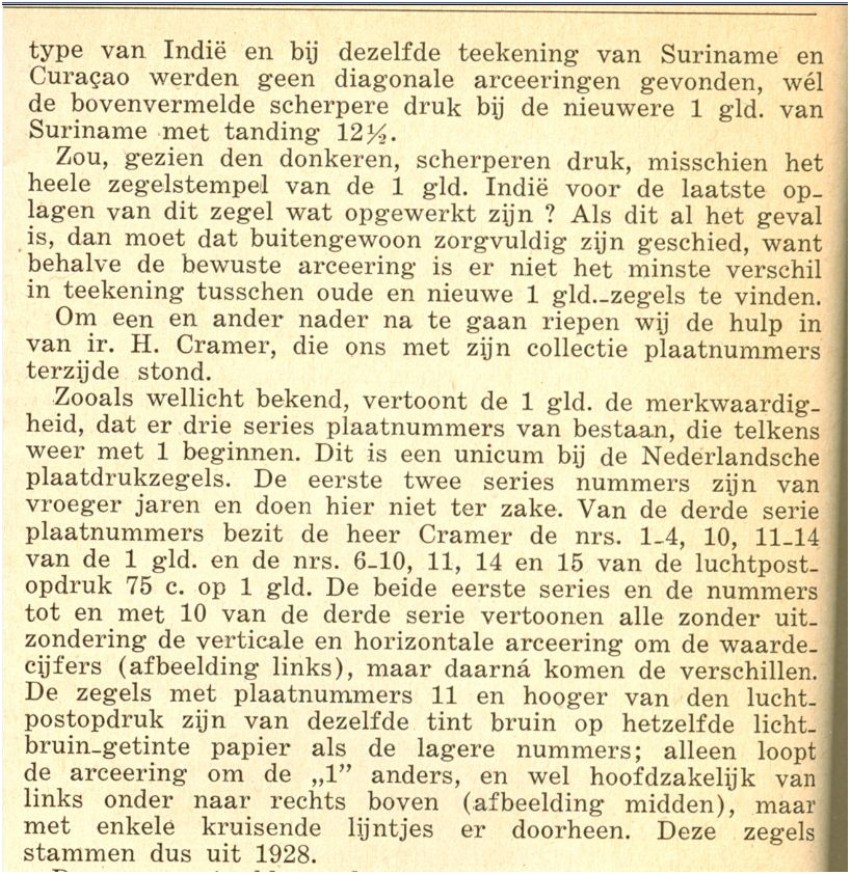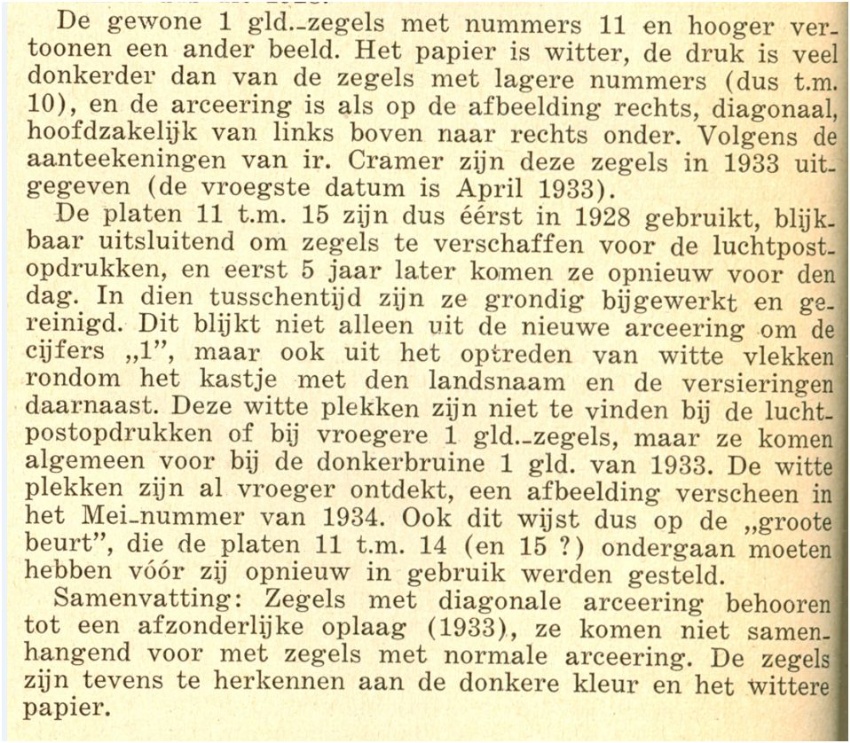
Ask a Dutch collector to point out to you which stamp this is, he will within a few minutes come up with the catalogue number.
Yet he is wrong!
Having dealt with Argentina stamps for the last two years and having found so many stamp variants that were unknown to the collectors there, the same can happen to any country's stamp.
The stamp looks familiar but somehow it is different. It may be different as it has never been described before and yet may turn out to be one of the various normal versions of that stamp.
It may however have a completely different origin. In this case I know what it is! But how am I to convince my fellow collectors that it is something special! That has not been described in any catalogue before????
to be continued ...

